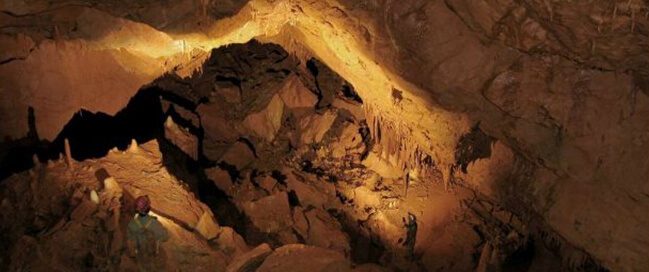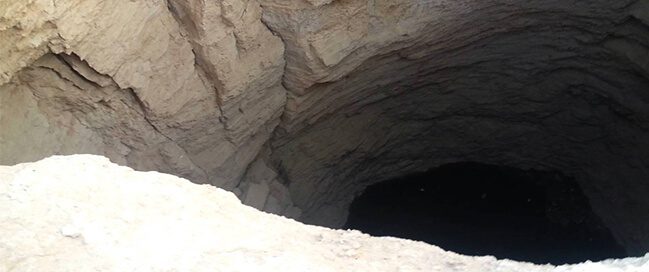
Caves across the world draw in lots of visitors and millions in revenue once a year, and no one knows about activities in the Kingdom of Saudi Arabia. The dominion is renowned for its stunning caves, many of which are sites of historical and non-secular importance. Here are the most beautiful caves in Saudi Arabia.

Caves are air-filled underground voids, developed by the previous action of water on a rock that over a protracted period of your time was dissolved and detached holes and tunnels within the ground. The holes and tunnels in cave systems are normally interconnected, reckoning on how the water seeped through the rock along joints and cracks, working its way right down to the geological formation below the surface of the bottom.
The caves illustrated here are within the limestones, the foremost common form of rock to possess caves, which during this part of Saudi Arabia consists of carbonate and little amounts of magnesium carbonate. The rocks formed 50 million years ago from the calcareous shells and skeletons of countless organisms that flourished in shallow warm seas that covered the peninsula. Over time, the shelly deposits were cemented by additional carbonate, became hard, and changed into limestone, forming a geologic unit, remarked because of the Umm er Radhuma and also the Rus formations. Starting 25 million years ago, these formations were raised above water level by Earth movements, affecting the entire center East, and were exposed to the wind and rain at the surface.
Discover the ancient nature of Al Bahah & book your package now

They are among the region’s most striking natural wonders, formed over uncountable years by ancient rivers and still home to mysterious secrets. Now Saudi Arabia’s caves, sinkholes, and caverns are getting hidden gems for the adventurous or merely curious to hunt out and explore.
More than 230 caves deep and shallow, and formed of limestone, gypsum, and other minerals are discovered within the Kingdom’s deserts. As the mysteries of Saudi Arabia gain wider recognition, these natural treasures are the topic of growing interest.
The earliest explorers of Saudi Arabia’s desert caves were the local people, whose daily lives represented a struggle for survival in a very very harsh environment. For them, the caves promised a possible respite from the warmth, cold, and wind-blown sand. Oftentimes, a brackish pool, hidden at the underside of a deep pit, was their only source of water.
Modern cave explorers crawl into the dark voids beneath the sands for other reasons. Some are attracted by the strange and infrequently breathtaking environment, totally unlike the stark desert above. Others are taken by the sheer challenge of risking limb and life on a skinny nylon rope to penetrate an inky-black world, where one small mistake may end up in death. All of those explorers relish the likelihood of reaching large caverns, where no creature has been before.

Caves are important, not only because they’re beautiful and awe-inspiring, but because they supply an in-depth record of past climates, surface processes, fauna, and flora. Careful analysis of the cave deposits reveals information about the abundances of the various isotopes of carbon, sulfur, and other trace elements that were present within the atmosphere when the deposits formed and offers the age of the deposits. These two sorts of information, chemical and chronologic, provide a record of global climate change.
Examination of the bones, pollens, and spores that will be trapped within the dust and silts within the caves, gives information about the kinds of animals and plants that existed within the recent past within the areas that are now desert. Surveying the caves and mapping the kinds and distributions of cave deposits provides information about the increase and fall of the geological formation, which, in turn, maybe a key to understanding the changing rates of discharge and recharge of the water volume and also the increases and reduces of rainfall.

Known in English as Mount Qarah, this cave system lies some kilometers from Hufuf within the Al Hasa Oasis of Saudi Arabia’s eastern region. Jabal Qarah, which is sort of fashionable locals, offers a definite labyrinth of natural caves made of sandstone, clay, marl, and sedimentary rocks.
Book Your Best Packages in Eastern province!

One of the longest caves in Saudi Arabia, stretching a spectacular length of 530 meters, is Shuwaimis, a cave located southwest of the Kingdom’s Hail region. Shuwaimis Cave comes in third long after Habashi crumple Taif (581 meters) and Um Jarsan dips Khaibar (about 1,500 meters) and has recently been visited by a team from the Saudi Commission for Tourism and National Heritage (SCTH), which is studying the chance of developing Shuwaimis into a tourist destination.
Hurry up & Book your favourite package in Hail city!

Also referred to as Dahl Heet, this cave, which is truly more sort of a sinkhole, is by Mount Al Jubayl within the small village of Heet in Riyadh, Saudi Arabia’s capital city. With its underground lake and stunning interior chambers, Heet offers a number of the clearest, bluest waters within the Kingdom, making it a perfect location not only for regular visitors but cave diving enthusiasts still.

Roughly translating to “the Cave of the Fallen Star,” Dharb Al Najem is rumored by some to be the positioning of a fallen meteor. Located within the desert east of Majma’ah in the Asian nation, the cave incorporates a single chamber measuring around 100 meters thorough and 100 meters in diameter. the sole thanks to getting in and luxuriating in the magnificence of the cave are to descend. Once at the underside, sharp rays of sunshine surround you, lighting up the cave and adding to its beauty.
Also Read:
Riyadh Season: The pleasure of entertainment in the Saudi capital
Places to visit in Riyadh: Wonderful attractions and activities to do in the capital!
Places to visit in Saudi Arabia: Discover the beauty of Saudi Arabia